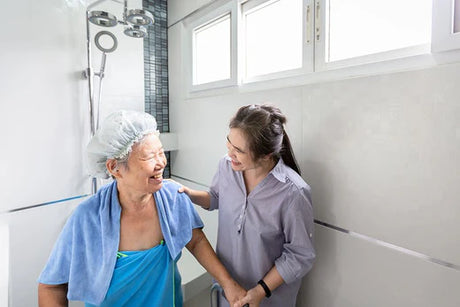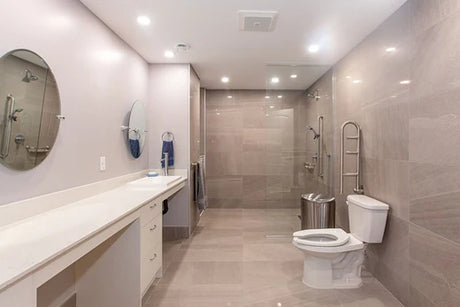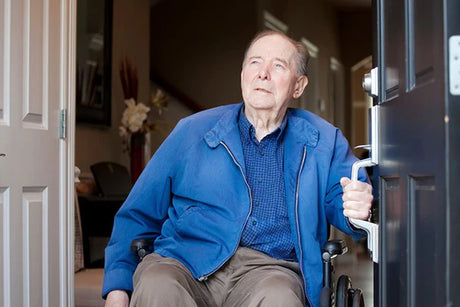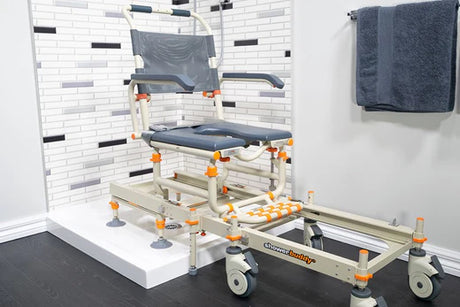In this article we’ll explore what families may look to do when their child, sibling or parent with a mobility impairment refuses the help of equipment.
Are the options provided actually right for their needs?
Like most product categories, there are options for virtually every type of mobility equipment. One specific brand or model is unlikely to be your only option. So if a loved one has gripes about some assistive technology, you should take the time to determine what these issues are and whether another product might be better suited. All mobility impairments are different, as are people themselves. It’s unlikely that there will be a one size fits all solution in most facets of mobility technology.
The best way through this is to engage with a reputable mobility equipment retailer and occupational therapist to trial a number of options within the category. It might not be a refusal to use any equipment, but simply the shortcomings of one specific model.
In other situations though, perhaps the equipment suggested is not appropriate for the level of mobility. Resistance to this can be a result of the equipment being either not enough support or too much support (thus disempowering independence). Take time to find out.
Engaging an OT to demonstrate benefits
Occupational therapists will draw upon other clients and knowledge to demonstrate equipment, and can conduct in-home assessments with your loved one directly, allowing them to feel more in control of the decision making.

Providing additional training on usage of equipment
Has there been equipment introduced to the home that is being ignored or met with hostility? It might not be a case of the equipment being wrong but the level of training and guidance to use the product being insufficient. It’s very common for mobility equipment to enter this territory, especially that which is acquired through non-medical channels like a poor quality shower chair from a homewares store.
It’s not just low quality equipment that can be left to gather dust however, and any family that’s invested in good quality solutions should couple this with the right training. Occupational and physical therapists are there to help end users engage with the equipment in a way that best serves their needs.
This might mean some refresher training regularly for a few weeks until the individual is confident using the equipment again. Perhaps there are some settings that allow it to be more accommodating for the individual’s preference. This is something therapists can support with, and may be the difference maker between equipment being rejected or incorporated into the daily routine.
Trialling alternative options – and making the decision together on which is best
Trialling equipment is key for many families and conditions where it’s not known immediately what solution is best. Through funded mobility equipment, it may be possible to run trials with different apparatus to determine not only what equipment to keep long term, but what combination of equipment makes the most sense to use.
Creating a trial period for equipment reduces the pressure on your mobility impaired loved one to commit to equipment straight away, and puts the decision making back in their hands. Perhaps two pieces of equipment that occupy the same functions need to be A/B tested over the month. Or maybe there’s a series of equipment that’s tested together along with a carer arrangement.
Trial periods help to get these concrete answers which are beneficial to an OT developing the care plan.
Additional Therapy
Is there additional therapy needed to prepare your loved one for equipment?
Assistive technology comes in many different forms. And they’re not all designed to provide support for all levels of mobility impairments. Take a wheelchair for instance; to self propel in a wheelchair, one must have the strength and control in their arms and hands to move drive wheels around. The same can go for stools, ramps, lifts, bars and other fixtures. The resistance that the family may be experiencing from their loved one may have nothing to do with the equipment but more their own level of confidence and physical ability. If this is the case, it’s best to stop pushing the equipment and work closely with your loved one’s medical professionals to identify what therapies would help bring them up to a level of confidence to engage with the equipment.
This therapy may be conducted in parallel with using assistive equipment, or may be required before the equipment is used. Over time, the confidence to use the equipment to its full capability will grow.
Understanding the underlying aversion to equipment
There may be other reasons why your loved one doesn’t want to use mobility equipment. These will need to be understood and addressed before trying different equipment options. There may be a desire to conduct daily tasks without the help of assistive technology. If this is the case, work with the OT to determine if this is possible and what programme of therapy will be needed to achieve this.
Modifying or phasing out equipment if applicable

If the desire to be independent without equipment is the goal (and if the prognosis allows for this, then it makes sense for it to be so), then this should be recognised and built into the plan. Oftentimes having a shared long term goal of phasing out equipment is a good way of getting short-medium term commitment of using it. This is something you’ll want to discuss with medical professionals and the OT.
Further reading
Further reading on the topic
Enjoyed this article? You may be interested in these resources online:
- Research highlights reluctance to use mobility aids due to others’ perceptions – attoday.co.uk
- Aesthetics and the perceived stigma of assistive technology for visual impairment – Taylor and Francis Online
- Why do older people love and hate assistive technology? ‒ an emotional experience perspective – National Library of Medicine














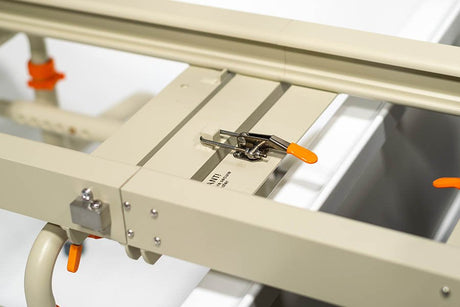











![Toilet Training A Young Child With Mobility Challenges [And How A Shower Chair Can Help]](http://shower-buddy.com/cdn/shop/articles/toilet-training-disabled-child_520x500_a90e5234-d372-435d-aa56-8da15dd3836c.webp?v=1722557239&width=460)







